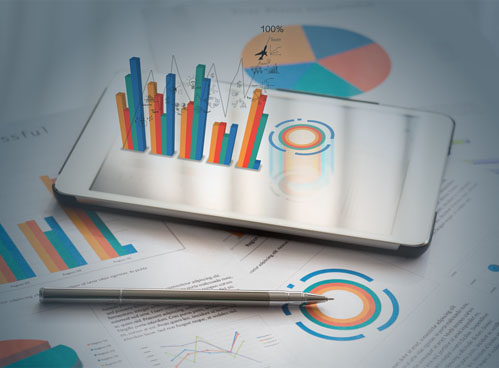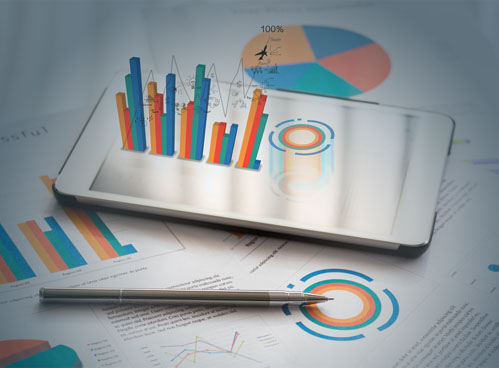Remembering Gartner’s predictions for a $16.5 billion-heavy BI industry for the current year, there is absolutely no reason to doubt another round of paramount growth in the data-driven business in 2017. From what analysts are forecasting now, big data goals are already embedded in many companies’ agenda, and slowly yet surely, they start to reflect on business outcomes we can expect 12 months from now.
As Datameer’s co-founder and Computer Science professor Ajay Anand and Impetus Head of Production Anand Venugopal explain, 2017 will be a stepping stone enabling business intelligence to gain the momentum industries have never seen before.
In short, BI software has so far miraculously transformed the corporate environment and imposed itself as the main competitive metric to distinguish excellent players from mediocre and poor ones. What we believe was the biggest benefit of such improvement is facing small and midmarket companies with the fact that underperformance is not always someone else’s fault. And they better deal with it soon.
How 2016 affected small players in the BI industry
2016 brought up some of the most prominent business intelligence software trends. Vendors released a number of products that are affordable yet capable of massive with incredible storage capacity and ensured those would be available even to smaller companies to boost growth and gain actionable insights. What was particularly striking during this process was the inclusion of new interactive data such as social tweets, videos, and IoT. As some of you will recall, closely 80% of this data was not even structured for analysis by that time, and there were no indications it could ever be exported to classic BI systems.
But, here we are. Looking at the FinancesOnline list of leading business intelligence companies in the market in 2016, we are actually exploring a world of unlimited possibilities for the future. BI software of today is heavily equipped to undertake all types of analyses, leverage industry data and gauge corporate assets, and is most of all fully enabled to answer the ‘what’s wrong?’ the question each time data brainers fail to produce results. What businesses usually like the most about new BI software systems is how they handle assets and capital, rather than plainly controlling leads and extracting practices from their behavior. The rule of today is all or nothing at all.
Our experts, nevertheless, still lean on the organizational side as the main incentive for BI growth. Systems of today handle unstructured data coming from hundreds of sources, and that’s exactly the state of the art we are discussing. Plus, the business intelligence tools you’d purchased in 2016 had definitely been ecosystem-adjusted, mature for flexible deployment, and accessible to non-savvy beginners rather than managers and professionals. And yes – that’s exactly how small companies like it served!
Another thing 2016 taught us to do is to put quality before quantity, which is why we are no longer analyzing whatever comes into our hands. It may be common sense or a product of the Data Provocateur concept forecasted for 2017, but it seems executives are only going to be pickier and more selective. No one can blame them for it, though – if you go back to 2008’s financial crisis, the first thing that will draw your attention is how it was inaccurate mortgage and loan data that led some countries to the edge of bankruptcy. The secret is, Anand reminds, to work with the data you already have, as modest, limited, or terrifying as it may be.
Business Intelligence Trends and Predictions for 2017
In brief, 2017 is expected to further simplify Big Data analytics for small companies and inexperienced users, and skip the unnecessary learning curves many users struggled with so far. Some of the new systems go as far as to allow full configuration and let you work with installed BI software whose interactions you’ve already met. Most of all, 2017 is expected to bring self-service and high-performing business intelligence technology.
If you’re a business user interested to buy his first BI product, the key factor to keep in mind is to choose a feature suite that will add the exact value your company needs. According to a recent Gartner report, 50% of BI users are failing to maximize transparency because of their inability to explore what the product can actually do for them.
At the high end, however, bid data analyses will remain the ‘rocket science’ of our close future, or for as long as leading companies are using them to speed up sourcing and strategic expense management. In order to skip steep learning curves and save time, smaller market players will have to restrict themselves from purchasing the market’s top performers. A trend even less positive is shaking the talent acquisition market: data specialists that can work with these ‘big data beasts’ are actually less than what we think when posting a vacancy ad. As experts predict, the issue of data management talent acquisition will take at least 2 to 3 years to be completely resolved.
If you like to look at big performers this probably won’t be that much of an issue: they will certainly pick up the best offers on the market, as in 2017 their integrated data projects will start to hit the first ROI billions. It wouldn’t be too far from reality to assume they will govern how data is shared between siloses, which is a decent alternative to us turning a blind eye on the market’s unfair competition. Yes, some of us would still rely on BI providers to govern brokerage and close market gaps on our behalf, because it is easier that way.
Regardless of whether you prefer to look at the bright or the dark side, you will have to go with the flow. The thing that will most probably help you do this is the ‘verticalization’ of data analytics, where you will be allowed (and supposed) to pick a product that serves your industry. Big players may then remain faithful to their universal data briefing solutions, but what is much more probable in 2017 is for them to prepare their own full-stack products for data processing.
What we could learn from it is that enterprises will stream personalized analytics in 2018 at the latest, and that will dissolve the myth of batch-analyses being the key to immediate opportunistic actions. With extra bucks and considerable coding knowledge, real-time insights can easily become a default principle of business intelligence, so be aware of them.
Conclusions
In general terms, BI software will not undergo such a dramatic shift – observed closely, companies are still looking to improve customers’ experience and make the most opportunistic moves as soon as the market has imposed them. This gives us ground to believe that open source systems are the BI tools of the future, not excluding the fact that they are already the BI tools from the past. It is a paradox, but at least it gives professionals the classic excuse of ‘BI advancements in 2017 will be both good and bad’. As it is common in competitive environments, you get as much cake as you can eat.
If it makes you feel better, arriving BI systems will be by far better integrated than their predecessors, enabled to perform critical analyses on the last minute, prone to democratize and secure big data, and ready to replace cloud-exclusive hosting with mixed deployment. Wherever you choose to stand on the cusp of these improvements, you will most likely retain some extra bucks on your account. Good news, isn’t it?












